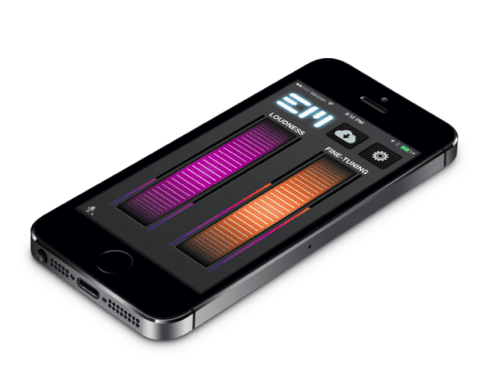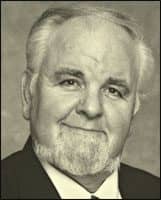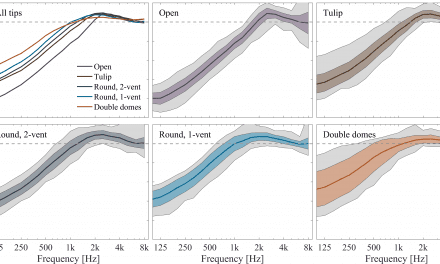Researchers testing the Ear Machine©, an iOS-based amplification software application, found that users’ gain preferences were, in general, consistent for each person, although these preferences could vary widely between individuals. When compared with NAL-NL2 targets across signal-to-noise ratios (SNRs) at moderate noise levels, users of the app made consistent self-adjustments but with significant variability: in general, the group chose about 20 dB more gain in the low frequencies and a wider-than-expected range of gain settings (high and low) in the higher frequencies. However, these participants’ adjustments only marginally affected speech intelligibility over a range of -10 SNR to quiet. The article by Peggy B. Nelson, PhD, Trevor T. Perry, Melanie Gregan, AuD, PhD, and Dianne Van Tasell, PhD, appears in the September 7, 2018 edition of Trends in Hearing.
The study involved 30 participants (17 males, 13 females; average age of 70 years) with symmetric bilateral mild-to-moderate hearing loss in quiet and in various restaurant noise conditions and simulated acoustic spaces. A total of 12 participants were new users, and the others had 1 to 25 years of experience with hearing aids. The Ear Machine’s two controllers on the iPod allowed the users to scroll for control of “loudness” (gain, compression, and limiting factors in 9 channels) and “fine tuning” (frequency tilt, described as emphasis or de-emphasis of frequencies above and below 2000 Hz). Participants started out with their respective NAL-NL2 targets, derived from stand-alone clinical software and verified using real-ear measurements (REM), then adjusted the controls until they heard the Connected Speech Test (CST) voice as clearly as possible in the various noise simulations.
Customization of gain vs NAL-NL2 targets. Previous research point to significant differences in overall self-selected versus audiologist-fit gain, with deviations ranging from ±8 dB in one study and 5-10 dB in another. Nelson et al found that some users preferred as much as 24 dB greater gain than the prescriptive fit in the low frequencies. They explained that this might be due to the fact the algorithm prescribed o dB of gain for most listeners (who had little or no hearing loss in the low frequencies), and the fitting instructions did not ask participants to talk for long periods of time during the fitting process. Some studies have suggested user preference for more gain in the low frequencies.
The wide range of self-adjustments in the high frequencies were more surprising to the researchers. In 41 out of 61 fittings, listeners preferred less high-frequency gain, while a smaller number preferred gain increases of 5-15 dB relative to the NAL-NL2 prescription for quiet to moderately noisy conditions. Several studies point to listeners preferring less gain than their prescribed settings.
The test-retest gain preferences for each individual were consistent across the SNRs tested (low-frequency band: 5.6 dB; high-frequency band: 6.9 dB). Across all retest conditions, over half (54.6%) were within 5?dB of the first self-adjusted fit, and four-fifths (80.7%) were within 10?dB. In general, subjects were found to select less gain as the noise level increased across the different listening environments.
Speech intelligibility in quiet and noise. Of the 30 subjects who participated in the gain adjustment task, about half (17) returned to complete the speech intelligibility tests. The overall results, according to the researchers, “suggest that listeners can adjust insertion gain throughout a wide range relative to their NAL fit without greatly altering their speech understanding” (note: 2 of the 17 were excluded from the data, see study). Although there was a trend of poorer self-adjusted performance at 0?dB and -5?dB SNR conditions (as listeners tended to decrease gain) relative to the NAL-NL2 fit, the correlations were not statistically significant. They report that listener adjustments of gain and compression settings did not appear to have a systematic impact on speech understanding: 80% of the cases were within 10 percentage points of the results for the NAL prescriptive fit.
Nelson et al conclude that:
Individuals were largely consistent in their adjustments across SNRs for moderate noise levels (r???0.9 for SNRs between ?5 and +5?dB), demonstrating that adjustments in moderate noise were not made arbitrarily, and that generally if a listener preferred more gain for one condition, that listener preferred more gain for all conditions. Gain adjustments were more variable in the quiet background and in the most unfavorable noise (?10?dB SNR), suggesting that individuals might weight criteria (e.g., comfort, sound quality) differently when speech is trivially easy or extremely challenging to understand. These findings imply that allowing self-adjustment of gain provides listeners with the opportunity to significantly and uniquely fine-tune their hearing-aid amplification settings.
The work was supported by funding by the National Institute on Deafness and Other Communication Disorders (NIDCD), and the authors noted that Dr Van Tasell is an employee of Bose Corp and supplied the Ear Machine instruments.
It’s important to note this study was designed to assess user preferences/customization after study participants were prescribed with an appropriate fitting, and not designed to assess the efficacy of users finding an appropriate hearing aid setting on their own via a self-fitting approach. In this study, users started at the optimized setting via a NAL-NL2 target and REM performed by a hearing care professional.
User customization of hearing aid settings using an interactive, patient-centered hearing aid fitting tool (Starkey Soundpoint) was also detailed in an article by Valentine, Dundas, and Fitz in the April 2011 edition of The Hearing Review.







Hi, I believe Melanie Gregan also holds a PhD. Just a note for revision. Thanks.
Thanks Adam. She indeed does! This has been corrected. Thanks again.